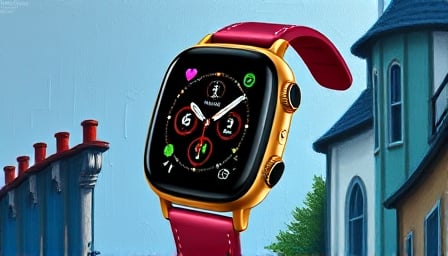Garmin Ltd. Capitalizes on AI‑Enabled Wearables and Omnichannel Golfing Innovation
The Swiss consumer‑discretionary specialist Garmin Ltd. has recently announced a partnership with Noonan that integrates launch‑monitor data directly onto golf courses. This move positions the company at the nexus of sports technology and data analytics, a sector that is witnessing accelerated convergence between hardware, software, and real‑time performance feedback.
Consumer Goods Trends and Retail Innovation
Consumer goods firms are increasingly adopting a multi‑touchpoint strategy to deliver seamless experiences across physical and digital environments. In the wearable segment, the global AI‑powered market is projected to grow at a compound annual growth rate above 20 % over the next five years. The key drivers include:
| Driver | Impact on Consumer Goods |
|---|---|
| AI‑Driven Health Monitoring | Enables proactive wellness management and personalized coaching, raising consumer expectations for continuous data insight. |
| Enterprise Productivity Solutions | Provides wearable analytics for workforce health, productivity tracking, and ergonomic optimization. |
| AR/VR‑Enhanced Experiences | Creates immersive training and entertainment, expanding the use cases for wearables beyond fitness tracking. |
Garmin’s portfolio of GPS navigation systems, fitness trackers, and aviation products aligns well with these trends, providing the company with a diversified revenue stream that can absorb shifts in consumer preferences.
Cross‑Sector Patterns: From Sports to Enterprise
Analysts observing multiple consumer categories—sports, health, and enterprise—note a recurring pattern: data integration. Whether it is a golf club’s performance metrics, a corporate wellness program’s activity logs, or a manufacturing plant’s ergonomic assessments, the ability to fuse disparate data sources into a unified platform is the differentiator.
- Sports – Garmin’s recent Noonan collaboration exemplifies how real‑time launch data can be integrated into a golfer’s training regimen.
- Health – Wearable AI devices are increasingly incorporating biometric sensors that provide early disease indicators.
- Enterprise – Work‑place wearables capture motion, heart rate, and environmental conditions to optimize employee health and safety.
By developing a common data architecture that supports these varied use cases, Garmin is poised to capture cross‑industry demand.
Omnichannel Retail Strategies
Retailers are pivoting towards an omnichannel approach that blurs the lines between online, in‑store, and experiential touchpoints. Garmin’s strategy reflects this shift:
- Digital Storefronts – Enhanced e‑commerce platforms with detailed product data and virtual try‑on capabilities.
- Brick‑and‑Mortar Integration – Physical retail locations equipped with interactive displays that showcase product performance in real time.
- Direct‑to‑Consumer (DTC) Channels – Subscription models for software updates, premium data analytics, and exclusive content.
The Noonan partnership will likely be leveraged as a content generator for Garmin’s DTC platforms, offering subscription tiers that provide exclusive coaching analytics to golf enthusiasts.
Supply Chain Innovations
The current supply‑chain landscape is being reshaped by just‑in‑time manufacturing, local sourcing, and digital twins for demand forecasting. Garmin’s existing global supplier network, combined with advanced predictive analytics, allows the company to:
- Reduce inventory carrying costs.
- Shorten time‑to‑market for new sensor technologies.
- Maintain high quality control through real‑time monitoring of component specifications.
These practices are essential for sustaining competitive advantage amid volatile commodity prices and geopolitical uncertainties.
Short‑Term Market Movements vs. Long‑Term Transformation
While the Vanguard S&P 500 ETF and the SPDR S&P 500 ETF Trust have shown modest gains in the past five days and year‑to‑date, Garmin’s stock performance remains largely insulated from broad market fluctuations. The company’s share price, which closed at $237.39 with a price‑to‑earnings ratio of approximately 29.3, indicates a valuation that reflects both its strong financial footing and the premium investors attach to its growth prospects in AI‑enabled wearables.
In the short term, Garmin’s market capitalization and stable earnings signal resilience. Over the longer horizon, however, the convergence of AI, AR/VR, and omnichannel retail presents a trajectory for sustained upside, provided the firm continues to invest in data integration and supply‑chain agility.
In summary, Garmin Ltd.’s recent Noonan partnership and its positioning within the rapidly expanding wearable AI market underscore a strategic alignment with prevailing consumer goods trends. By weaving together omnichannel retail tactics, cross‑sector data integration, and supply‑chain innovation, the company is well positioned to translate short‑term market stability into long‑term industry transformation.
